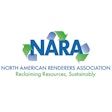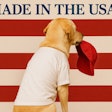Researchers from around the world recently gathered to discuss advances in companion animal sciences. The program was part of the 2005 Federation of Animal Science Societies (FASS) meeting in Cincinnati, Ohio, USA on July 27 and 28.
Companion Animal Science
In the open paper section entitled "Nutritional and Health Considerations for Companion Animals," there were 12 oral and poster presentations attended by over 60 academic and industry scientists. At the end of this session, the 2004 Corbin Award recipient, Dr. Anita Oberbauer of the University of California-Davis, provided insight on what she sees as the future for companion animal sciences. She emphasized how it should be addressed in academia.
Dr. Oberbauer commented that "the time is right for (animal science departments) to dive into companion animals." Her basis for this included:
- More funding opportunities from trade and governmental groups;
- Growing student interest; and
- The need for human-appropriate biomedical models.
Dr. Oberbauer predicted that companion animals "will become a prominent part of animal sciences."
Highlights
A special symposium entitled "New Advances in Pet Health, Nutrition, and Reproductive Management" was sponsored by The Iams Company. It was chaired by Dr. Diane Hirakawa who emphasized the goal of the symposium was to "build bridges between [the disciplines of] animal science and veterinary medicine." Presentations included the following:
Biomarkers.
David Waters, DVM, PhD, Purdue University and Gerald P. Murphy Cancer Foundation, provided a very thought-provoking synthesis of observations from a multitude of disciplines on cancer prevention and treatment. Dr. Waters developed a scientific platform for his research with the dog as a model to identify biomarkers of cancer and aging and how these might be used in the fight against cancer in animal and man.
DHA
Recent discoveries in maternal nutrition have revealed, according to Russ Kelley, The Iams Company, that supplementation of the dam with elevated levels of DHA (docosahexaenoic acid; a long chain polyunsaturated fatty acid found in oil from fish) will accelerate the learning curve for puppies.
Carotenoids
Boon Chew, PhD, Washington State University, summarized the growing body of evidence that special pigment carotenoids (close cousins to vitamin A) show promise in promoting immune function in dogs and cats. Specifically, astaxanthin (a red-pink pigment), B-carotene (a yellow pigment), and lutein (an orange pigment) stimulated cell-mediated (e.g. interleukins) and humoral (e.g. immunoglobulins) immune functions, increased death in mammary tumor cells, and increased c-reactive protein levels in companion animals.
Breeding
Robert Hutchison, DVM, Animal Clinic Northview, Inc., described the many practices that have been learned over the past 20+ years since litters resulting from artificial insemination were recognized by the AKC. Dr. Hutchison stated that effective indicators of when to breed included timing and choosing the right signal (behavioral, endocrine, or histological) to monitor.











